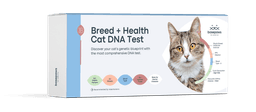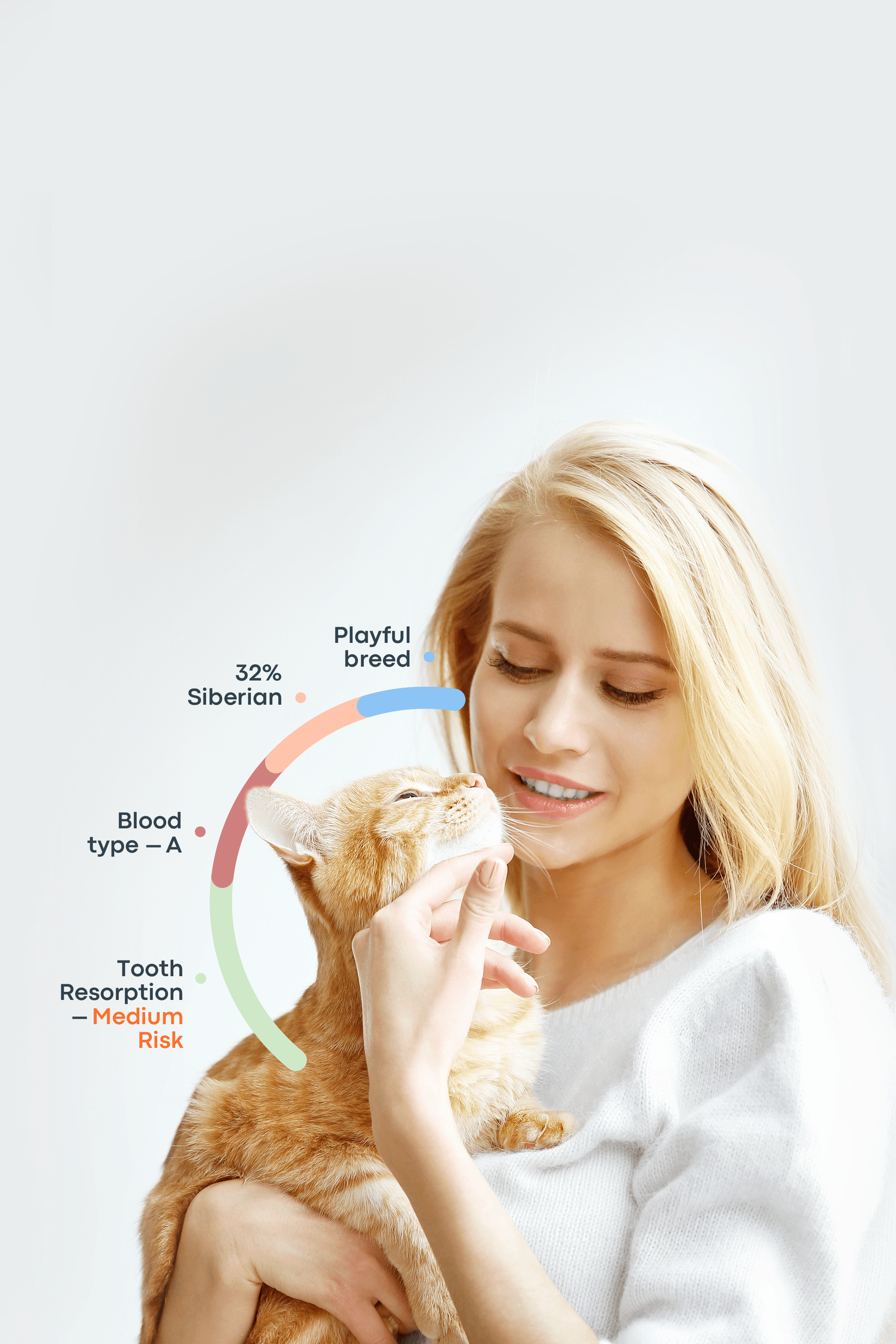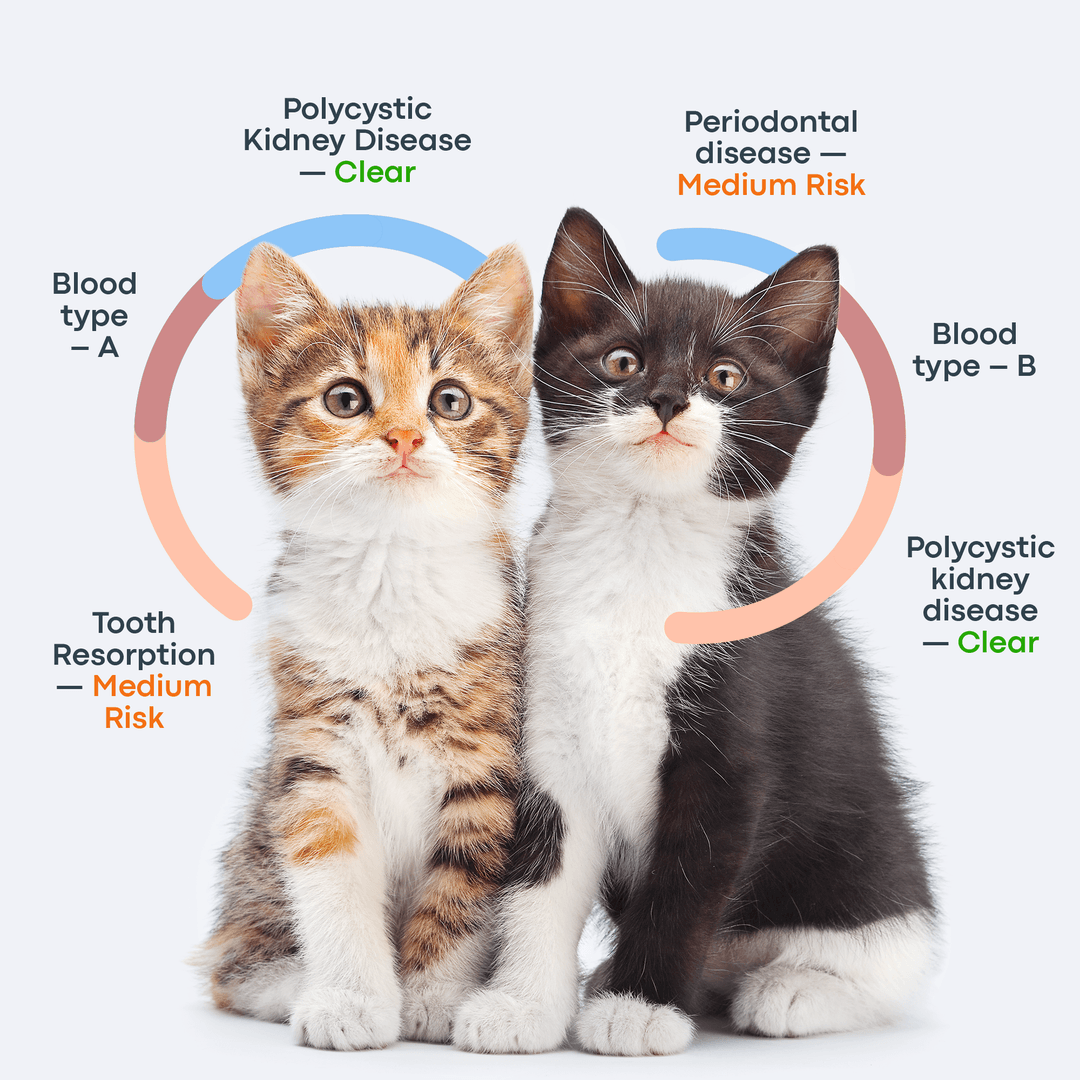While the average cat's life expectancy ranges from 12 to 18 years, many factors influence how long a cat will actually live. Breed, access to veterinary care, and the presence of diseases throughout the life cycle of a cat—all play a role.
Of course, most cat owners would love for their feline companions to live forever—but that remains beyond human reach. If you’re hoping to help your cat live a longer, healthier life, there are a few key areas to focus on.
One major consideration—though sometimes controversial—is that indoor cats typically live significantly longer than outdoor cats. The outside world presents many risks: cars, predators, harsh weather, and encounters with other animals can all result in injury or worse. Unless you're caring for a feral cat that cannot be safely kept indoors, it’s generally best to raise cats as indoor pets.
That said, an indoor environment must still be supportive of your cat’s well-being. Providing enriching toys, feeding high-quality food suited to their breed and life stage, and adopting preventative health habits can all contribute to a longer, happier life for your cat.
How Long Do Cats Live?
The average cat lifespan is between 12 and 18 years, though several factors can influence how long a cat actually lives.
Average Cat Lifespan: Indoor vs Outdoor
An indoor cat's life expectancy is 13-17 years on average, with some reaching their early 20s and beyond. In contrast, outdoor cats generally have a shorter lifespan—averaging 5 to 7 years—due to increased risks such as traffic accidents, exposure to toxins, and a higher likelihood of injury or disease.
Factors That Influence Cat Lifespan
Just like in humans, a cat’s genetics, diet, body weight, overall health, spaying or neutering status, access to veterinary care, and living environment all impact the cat's lifespan. While most indoor cats reach their teens, some live well into their 20s.
Famous examples include Creme Puff, a mixed-breed tabby from Texas who reportedly lived to be 38 years old, and Puss, a tabby from the UK who lived to be 36 years and 1 day.
Cat Life Stages and What They Mean
Cats have different needs at each stage of life. Kittens require specific care to support healthy development, while adult and senior cats need tailored diets and preventative care to help extend their lifespan.
Documenting your cat’s habits, health, and behavior as they grow can not only become a meaningful record of their life but also provide valuable insights to veterinarians if any concerns arise.
Kitten (0–6 months)
Caring for kittens can sometimes feel like a full-time job. No matter the breed, kittens are full of energy and curiosity. If you’re fostering newborn kittens, be prepared for a demanding schedule—they require round-the-clock care in the early weeks. The hard work pays off once they begin to open their eyes and explore their surroundings.
Much like human babies, this stage is all about play, socialization, and learning proper behavior. Many animal professionals recommend adopting or fostering two kittens at once, as they learn important social cues from each other through play.
This is also a critical time for vaccinations to protect their health. Kittens typically need the following core vaccines:
Cat flu (FHV and FCV)
Feline panleukopenia (also known as feline parvovirus or infectious enteritis)
Rabies
If your kitten has access to the outdoors, they should also receive the Feline Leukemia Virus (FeLV) vaccine. In some cases, your vet may recommend a vaccine for Chlamydophila felis, especially if your kitten is considered at risk.
Kittens usually receive their initial vaccinations around 6–8 weeks of age, followed by a second dose 3 to 4 weeks later. After that, they’ll need booster shots every one to three years, depending on local regulations and veterinary guidance.
Junior (7 months–2 years)
Often referred to as a cat’s “teenage years,” the cat's life period is marked by growing confidence—and sometimes, a bit of rule-breaking. Your cat may test boundaries and exhibit more independent or mischievous behavior. Spaying or neutering during this stage can help curb some of the more unruly tendencies and, importantly, prevent unwanted litters.
This is also the time to transition from kitten food to adult cat food. Monitor your cat’s weight and body condition to ensure they are meeting healthy growth milestones.
Young Adult (3–6 years)
This period is when most cats are at their physical and mental peak. They are typically active, playful, and in excellent health. Your primary responsibility during this time is to maintain their health through proper nutrition, regular exercise, and routine vet care.
Unfortunately, many cats don’t receive regular checkups due to stress and anxiety around vet visits. While these behaviors can be challenging, finding ways to manage your cat’s stress is essential for their long-term well-being. Establish a calming routine for travel, use a sturdy, covered carrier, and consider short-acting anti-anxiety medications prescribed by your vet. These medications can help make vet visits less traumatic, with minimal side effects.
Mature Adult (7–10 years)
As cats reach their mature adult years, they often begin to slow down. Activity levels may decrease, and early signs of aging may start to appear. Keep an eye out for:
Joint issues, such as stiffness, reluctance to jump, difficulty using the litter box, or reduced grooming.
Dental disease, which is very common in aging cats and may present as bad breath, a reluctance to eat, drooling, or pawing at the mouth.
Early detection and management of these conditions can make a significant difference in your cat’s comfort and quality of life.
Senior (11–14 years)
During the senior years, once-active cats may slow down and spend more time resting—often becoming affectionate lap companions. At this stage, regular veterinary checkups and routine bloodwork are highly recommended to monitor for age-related conditions, especially thyroid disease, kidney issues, and arthritis.
Continue to watch for signs of joint pain or stiffness, and consider making their environment more accessible and comfortable as they age.
Geriatric (15+ years)
Cats aged 15 and older are truly in their golden years. They tend to sleep more, prefer softer food, and often seek out extra warmth and comfort, such as cozy blankets or warm laps. You may notice increased vocalization, which can signal discomfort, confusion, or a need for assistance.
Some cats may begin to show signs of Feline Cognitive Dysfunction (FCD)—similar to dementia in humans. Symptoms may include disorientation, altered sleep patterns, or difficulty navigating familiar spaces.
While it can be hard to witness these changes, there are many ways to support your aging cat:
Minimize changes in their environment to reduce stress
Provide ramps or stairs to help them reach favorite spots
Use accessible litter trays with low sides
Add nightlights to help reduce nighttime confusion and anxiety
With thoughtful care and adjustments, many geriatric cats can continue to enjoy comfort and companionship well into old age.
Longest-Living Cat Breeds
When considering how long cats can live, some breeds are known for their longevity. For example, Burmese cats are often noted for living well into their teens and beyond—one of the oldest known Burmese cats reportedly lived to 35 years. Other breeds with impressive lifespans include Birmans, Ragdolls, and Siamese cats, many of which live 15 to 25 years with proper care.
Do Purebreds or Mixed Breeds Live Longer?
Generally, mixed-breed cats tend to live longer than purebreds. This is largely due to greater genetic diversity, which may reduce the risk of inherited health conditions that are more common in certain purebred lines.
Tabby Cat Lifespan
“Tabby” refers to a coat pattern—not a breed—so a tabby cat's lifespan depends on its actual breed and overall health and environment. Since tabbies can be found in many different breeds (and mixed-breeds), their lifespan can vary widely. Interestingly, many of the longest-lived cats on record had tabby markings.
9 Everyday Habits That Can Help Your Cat Live Longer
1. Keep Your Cat Indoors (or Supervised Outdoors)
Indoor cats statistically live much longer than their outdoor or feral counterparts. Staying inside protects them from traffic, disease, predators, and environmental toxins. However, the outdoors can be a rich source of mental stimulation. If you’d like to offer outdoor access safely, consider building a catio (an enclosed outdoor play area) or teaching your cat to walk on a leash. Yes—cats can be leash-trained, though it may take patience, especially with adult cats.
2. Schedule Regular Vet Visits
Cats need annual veterinary checkups, and biannual visits once they reach their senior years. Regular exams help catch health issues early and allow your vet to provide essential preventative care, such as vaccinations, dental cleanings, and blood tests. Staying proactive with veterinary care can significantly extend your cat’s life.
3. Play with Your Cat Daily
Cats are natural hunters with both predator and prey instincts. Daily interactive play sessions help satisfy these instincts, prevent boredom, and support a healthy weight. Short bursts of play using wand toys, lasers, and balls are ideal. Rotate toys regularly to keep things interesting. You can also encourage climbing and create obstacle courses to mimic the challenges cats face in the wild—this keeps them mentally sharp and physically agile.
4. Offer a Stimulating Environment
Human homes aren’t designed with feline brains in mind. While your space may be comfortable for you, it can be underwhelming or even stressful for a curious cat. “Catifying” your home with scratching posts, cat trees, climbing shelves, or window perches can dramatically improve their mental health. Fortunately, many of these products come in styles that fit seamlessly with your home décor.
Rotate toys weekly to keep things fresh and engaging—what’s exciting one week might feel “new” again later. Without stimulation, bored cats may develop depression, destructive behaviors, or even urinary issues due to stress.
5. Keep Their Weight in Check
Obesity is a leading factor that shortens a cat’s lifespan. It isn’t just the extra weight—it’s the strain on joints, the increased risk of diabetes, and the potential for organ failure that come with it. Different breeds have different ideal weight ranges, so it’s best to consult your vet for your cat’s target weight and body condition score (BCS). A healthy weight supports mobility, organ function, and overall quality of life.
6. Brush and Groom Regularly
Though cats are known for their grooming habits, they can benefit greatly from regular brushing, especially long-haired breeds prone to mats and skin issues. Grooming reduces hairballs, which can cause intestinal blockages, and helps prevent skin infections or painful tangles.
Beyond hygiene, grooming also strengthens your bond and gives you a chance to check for lumps, bumps, or other changes that may require a vet’s attention.
7. Prioritize Clean Water and a Balanced Diet
Forget the cartoons—real cats don’t need milk or lasagna. What they do need is access to clean, fresh water and a balanced, vet-approved diet tailored to their age, activity level, and health needs.
Cats are notoriously poor drinkers, so including wet food in their diet is an excellent way to support hydration—especially important for older cats or males prone to urinary tract issues or kidney stones. Proper hydration and nutrition are two of the simplest yet most powerful ways to help your cat thrive.
8. Spay or Neuter Your Cat
The most obvious benefit of spaying or neutering your cat is preventing unwanted litters—but the health and behavioral benefits go far beyond that.
Spaying and neutering can significantly reduce the risk of certain cancers (like mammary, uterine, or testicular cancer), help curb problem behaviors such as spraying and aggression, and reduce roaming, which often leads to accidents or fights with other animals.
Some pet owners—particularly those with male cats—worry that neutering is emasculating. This is a myth. However, if aesthetics are a concern, ask your vet about feline testicular implants, a cosmetic option that offers peace of mind without compromising your cat’s health.
9. Respect Their Need for Routine and Stress-Free Living
Cats thrive on routine and predictability. Sudden changes—like loud noises, new pets, or shifting schedules—can cause significant stress. Over time, chronic stress may lead to behavioral issues, health problems, or withdrawal.
Try to maintain a calm, consistent environment. If change is unavoidable (like travel or visitors), take small steps to ease the transition. For example, if a cat sitter will be caring for your cat while you’re away, arrange a few short visits in advance to help your cat adjust. Provide quiet hiding spots, use calming sprays or pheromone diffusers, and avoid exposing your cat to animals with high prey drives, like unfamiliar dogs or ferrets.
Being sensitive to your cat’s emotional well-being can go a long way in extending their life and improving their quality of life.
Cat Life Years vs Human Years: What’s the Real Age?
You may have heard the old rule that one cat year equals seven human years—but that’s a myth. Feline aging doesn’t work linearly. According to Purina, here’s a more accurate approximation:
A cat’s first year is roughly equal to 15 human years
Their second year adds about 9 more human years
Every year after that adds approximately 4 human years
Check out the table below to see how old your cat is in human terms and better understand their stage of life.
Cat Age (Years) | Equivalent Human Age (Years) | Life Stage |
0–1 | 0–15 | Kitten |
2 | 24 | Junior / Young Adult |
3 | 28 | Young Adult |
7 | 44 | Mature Adult |
11 | 60 | Senior |
15 | 76 | Geriatric |
22+ | 104+ | Exceptional Longevity |
Conclusion
So, how long do cats live? The answer depends on many factors. While every cat owner wishes their feline friend could live forever, that’s sadly impossible. The best way to help your cat live a long, happy life is to provide excellent care and shower them with love during their time with you.
Your local veterinarian and animal behavior experts can offer valuable support and guidance tailored to your cat’s needs. If you’ve experienced the loss of a beloved pet, reaching out to a counselor or psychologist can help you navigate your grief. It’s completely normal to feel upset when a pet passes away—you are not alone.
Frequently Asked Questions
Is 15 old for a cat?
Yes, 15 years is generally considered old for a cat and places them in the “geriatric” category.
In the wild, how long will a feral cat live?
On average, feral cats live about 2 to 3 years due to the challenges of survival outdoors.
How rare do cats live to 25?
While reaching 25 years is uncommon, it’s not extremely rare. Cats with good genetics and proper care can live well beyond 25 years.
Reference List
https://www.pdsa.org.uk/pet-help-and-advice/pet-health-hub/other-veterinary-advice/cat-and-kitten-vaccinations
https://www.msdvetmanual.com/cat-owners/disorders-affecting-multiple-body-systems-of-cats/feline-leukemia-virus-felv
https://www.petmd.com/cat/conditions/neurological/dementia-cats
https://www.purina.co.uk/articles/cats/senior/care/cats-age-in-human-years


